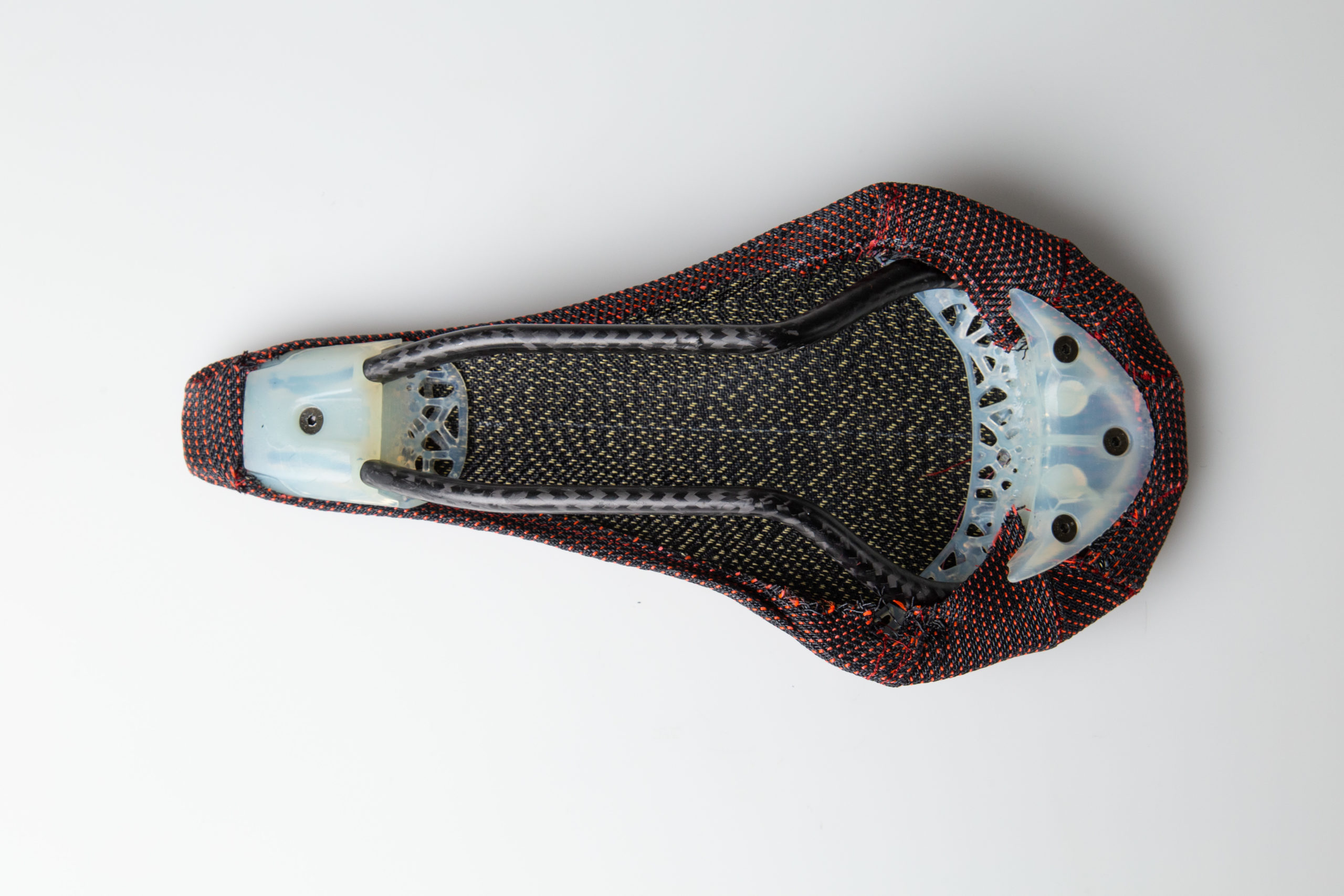With the release of HP’s Multi Jet Fusion, the world began to see the reality of 3D printing for serial production, leading additive manufacturing (AM) stalwart Stratasys to kick up its investment into high-speed sintering (HSS) at Xaar. Soon enough, Stratasys released its own mass sintering technology, selective absorption fusion (SAF), and scooped up Xaar’s 3D printing outfit, Xaar 3D Ltd, completely.
Now, we’re beginning to see the possibilities of SAF for series production, as German design company DQBD GmbH has relied on Stratasys’s SAF system, the H350 3D printer, to 3D print several load bearing parts for a new bike saddle at scale. The company claims that it saves £22,000 in costs across product development to production and reduces lead times from three to six months to just 10 days compared to traditional injection moulding techniques, with tooling costs completely eliminated.
“We had always planned for AM to play a pivotal role in the creation of SAM – our cycling saddle,” says Sebastian Hess, CEO at DQBD. “In fact, we designed the saddle with additive manufacturing in mind. As well as delivering consistently accurate, production-grade parts at volume quickly and affordably, the technology offers a unique opportunity to personalize products in a way that cannot be replicated with traditional methods.
The SAM bike seat is made up of a personalized, semi-rigid 3D printed spine which then has a seat bad thermoformed around it, allowing customers to tailor the product to their needs. This includes the use of pressure point and weight distribution mapping meant to match the fit of the rider’s body. A combination of rigid and flexible areas of the saddle’s spine are designed to provide support and elasticity where necessary.

Consisting of a semi-rigid, personalised 3D printed spine and a 3D thermoformed seat pad, the saddle was designed with additive manufacturing in mind. Image courtesy of Stratasys.
“We put the saddle through rigorous testing including impact strength, pressure, and fatigue resistance to ensure that it met industry standards and our own high expectations,” says Hess. “The PA11 material on the H350 was a great fit for the additively manufactured parts as it offers us high ductility, high impact and high fatigue resistance which was essential for our design.”
The company claims that the saddle is also more sustainable, due to the lack of glue involved and the ability to separate the individual components and reused for future production. Additionally, the Stratasys High Yield PA11 from which it is made is derived from “sustainably grown” castor oil.
Yann Rageul, Head of Manufacturing Business Unit EMEA & Asia at Stratasys adds: “We are seeing a definite trend in businesses’ readiness for volume production of end use parts. DQBD is showcasing how the H350 and its SAF technology can not only optimize the entire production process with valuable time and cost savings, but also shows the deployment of AM for truly unique and advanced designs – ready for production at scale. We are proud to see that the SAM saddle design DQBD created shows the advancements of additive manufacturing within the product development cycle – as the product concept was designed around AM from the start.”

The assembled saddle with 3D printed spine and 3D formed cover. Image courtesy of Stratasys.
The project not only demonstrates the potential for SAF, but also the way in which the industry is changing. As stated by the Stratasys and DQBD reps, this is an example of a product being designed with additive in mind from the get-go with a technology capable of carrying it out. This is just the beginning, as additional firms develop their own versions of HSS or other mass AM techniques. Think of voxeljet, which has licensed Xaar’s HSS process, or Azul 3D, which has used large-scale continuous digital light processing to produce parts for Wilson. We can’t forget Carbon, either, who has already demonstrated large batch production of midsoles for adidas shoes.
Subscribe to Our Email Newsletter
Stay up-to-date on all the latest news from the 3D printing industry and receive information and offers from third party vendors.
You May Also Like
3D Printing News Briefs, April 13, 2024: Robotics, Orthotics, & Hypersonics
In 3D Printing News Briefs today, we’re focusing first on robotics, as Carnegie Mellon University’s new Robotics Innovation Center will house several community outreach programs, and Ugogo3D is now working...
Rail Giant Alstom Saves $15M with 3D Printing Automation Software 3D Spark
3D Spark has entered into a three-year deal with the rail giant Alstom. Alstom, a transport behemoth with annual revenues of $16 billion, specializes in the manufacture of trains, trams,...
Meltio Expands Global Reach with New Partnerships in the Americas and Europe
Spanish 3D printing manufacturer Meltio has expanded its sales network across the globe. With the addition of three new partners in the United States, Brazil, Argentina, and Italy, Meltio aims...
3D Printing Webinar and Event Roundup: April 7, 2024
Webinars and events in the 3D printing industry are picking back up this week! Sea-Air-Space is coming to Maryland, and SAE International is sponsoring a 3D Systems webinar about 3D...































